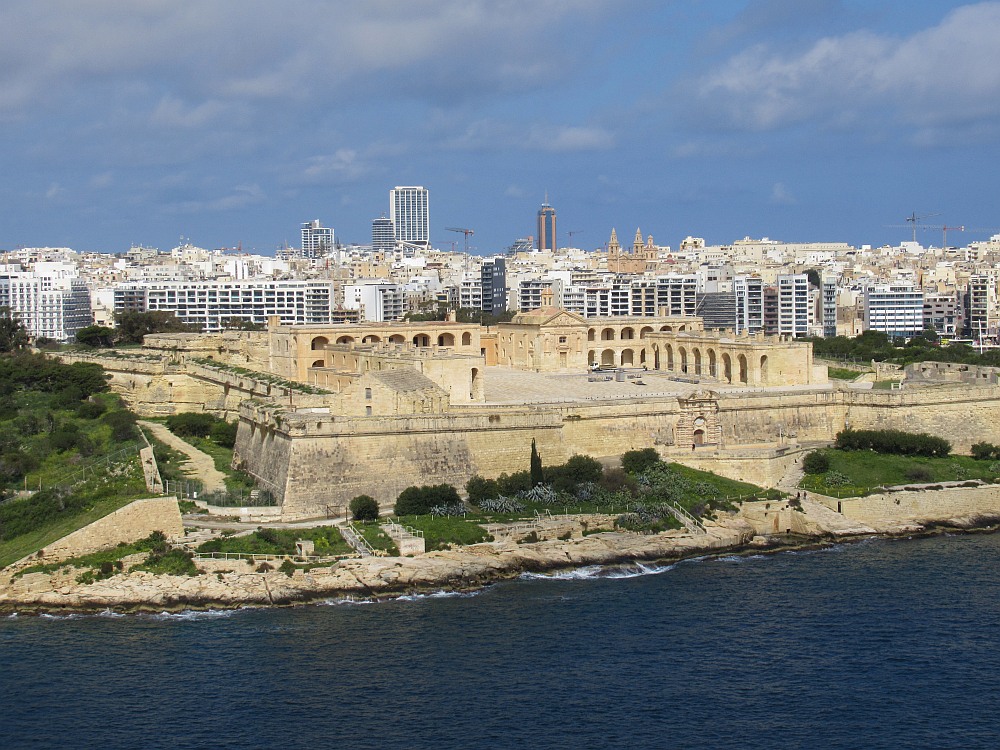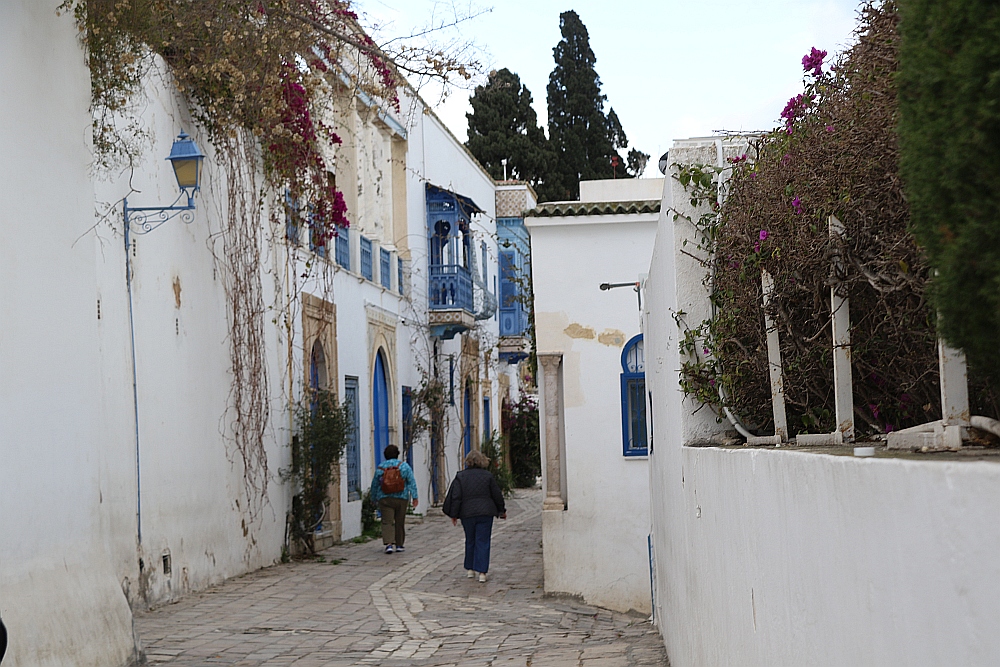Petra & Amman Jordan Day 3
Petra & Amman Jordan
Day 3 - Tuesday, November 23, 2004 - Tour Amman, Explore, & Swim in the Dead Sea
Our room was nice and cool and we heard the rain during the night as our window was open. This morning, early, we heard the first call for prayer that is electronically produced now and synchronized throughout the city.
It was still dark so we went back to sleep until the alarm went off at 7:15. Our buffet breakfast was excellent, lots of variety in the baked goods as well as eggs, sausage and fruits.
I checked the internet and was pleased to find a long note from Eduardo - it certainly is nice to have a FREE high speed WI-FI internet in the lobby with my own laptop.
We were on the bus at 9 AM and were interested to know we have a military police escort, a young man named Ackmahd - my phonetic spelling. Our driver is Mahkmuhd and our tour guide is Samir. Samir gave us a historical overview of Amman, one of the oldest cities in the world, from the time of King David and Bathsheba, over 3,000 years ago.
Amman was originally known as Philadelphia during the Greek and Roman times. Amman is called the "White City" because of its many houses built from characteristic local limestone materials. This gleaming city displays an intriguing blend of Middle Eastern and cosmopolitan influences.
It is hard to believe that it was almost abandoned during the Ottoman Period and only had 250 inhabitants in the 1800's. The greatest influx has come after the first Iraqi War when many people fled and settled here.
It is now the economic, political, and social capital of Jordan. It is over 3500 feet above sea level which makes it cooler than other parts of the Middle East. Jordan is a very open country with many freedoms of religion and lifestyle. It now has over 2,000,000 inhabitants.
Our first stop this morning was the Citadel, a Roman fortress high on one of the seven hills of the old city. The rock formation in ruin was the Temple of Hercules, built to replicate power and strength.
The museum, although small, had an incredible collection of Jordanian artifacts including some portions of the Dead Sea Scrolls. Walking in back of the museum, to the Palace of Amman, we saw a newly excavated 8th century palace.
The main hall, courtyard, surrounding fortress, and a huge water reservoir was still being restored by a Spanish archaeological association. The day that had started with beautiful clear blue skies turned suddenly dark and cloudy with strong winds that made the 50 degrees seem much colder.
We got back on the bus and climbed down the hill to the Roman Amphitheater that we had seen from the Citadel overlook. The guides that welcomed us were so friendly and asked us where we were from, thanked us for visiting their country, and wished us the best on our tour.
As we were going to find out for the rest of the day, whenever we met people, this is a very typical feeling for the Jordanians. They are so glad that people are visiting their country. I had several individuals ask me to take their pictures, thanked me for it, and wished me well for the remainder of the trip. Can one imagine an American wishing tourist well?
The amphitheater itself has excellent acoustics and is still being used for plays, musicals, and concerts. It will seat 6,000 people. Beside the theater, there was a Jordanian folklore museum that had models and scenes portraying Jordanian history.
As we left, we stopped for coffee from vendors in the park. We had a choice of sweet!, medium or straight - it was so strong and laced with cardamom spice. The charge was 25 cents per cup.
After getting back in the bus, we drove through the main streets seeing the small markets, with vegetable and fruit stands, leather goods, tapestry, and the famous Jordanian gold shops.
Because the workshop for the artisans was closed, we headed southwest to visit the Dead Sea fed by the Jordan River. We made a brief stop at the sea level marker to take photos. Along the route we saw irrigated fields of corn, bananas, eggplant, and tomatoes.
Samir told us of the extended growing season and that these fields generally have three seasons of crops per year. Also along the road we saw small Bedouin tent villages with their camels and their herds of goats and sheep.
Jordan seems to be a poor nation as it is the only Arab nation without oil. Fortunately for them, there is no desire by foreign governments to conquer them as they are a very peaceful agricultural nation and depend on olives and other such produce for their survival. The tourist industry is just starting, making it a new destination for most people.
In the early afternoon we had traveled down (400 feet below sea level) to the Dead Sea, a landlocked body of salt water (38%) whose rich history goes back to Biblical times. We stopped for lunch at the Dead Sea Restaurant where a superb buffet awaited us.
This area has a lot of construction as new resort hotels are springing up along the coast line. It is only used in the Fall, Winter and Spring as the summer has temperatures in excess of 100 degrees daily. After lunch several people went swimming in the sea, marveling at the buoyancy factor.
Sylvia and I went for a short swim while Charlie and Gennie watched from the shore and collected salt crystals from the boulders along the shore. Although the sun finally came out, it was still chilly, but clear enough so that we could see Jericho on the Israeli side of the Dead Sea.
On the way back to Amman, Samir pointed out the mouth of the Jordan River but explained that Israel takes so much water from the river to irrigate their crops that the river was barely a trickle. Along with the intense evaporation rate and the diminished river, the Dead Sea is losing a meter of water per year. There are plans to restore more water, otherwise they are afraid the Dead Sea will be lost forever.
We stopped at a local tourist bazaar where some bought Jordanian and Middle Eastern handcrafts and curios. It was interesting but not tempting.
Our last stop was a sweet shop where we sampled delicious pastries made with nuts, dates, and honey in varying kinds of flaky crusts.
As we were leaving, I was photographing a typical Jordanian lamb and chicken eatery (gyros) and had an opportunity to talk to a family about the food and their dinner. They were also so welcoming and accommodating, telling us the different words in Arabic, thanking us for visiting their country, and wishing us well.
We returned to our hotel and had dinner at 7:30. The whole group seems to be getting along well after less than 24 hours.
The pictures I will include are of our tour guide Samir, me swimming in the Dead Sea, the Roman Temple of Hercules, our bus and sunlight through the clouds at the Dead Sea.
Golden Tulip Hotel - - - Meals: B, L, D
If you wish to travel with OAT Click Here.
To receive $50 per person off your first reservation with OAT, mention the following information when reserving your Overseas Adventure Travel Trip: Mr. Victor Garcia Customer #673062
Comments
Post a Comment!I just returned from the Nile/Jordan OAT trip and enjoyed reading your journal. Our Jordan guide was also Samir and I wonder if you remember his last name.
Featured Journal
Day 18: Mediterranean Navigation
Day 18 - Wednesday, March 19, 2025 – Disembark Ship & Return to USA
It was a dark and rainy morning when we put our luggage outside of our cabin door at 4:15. We met three of our fellow passengers also on the same flight...










